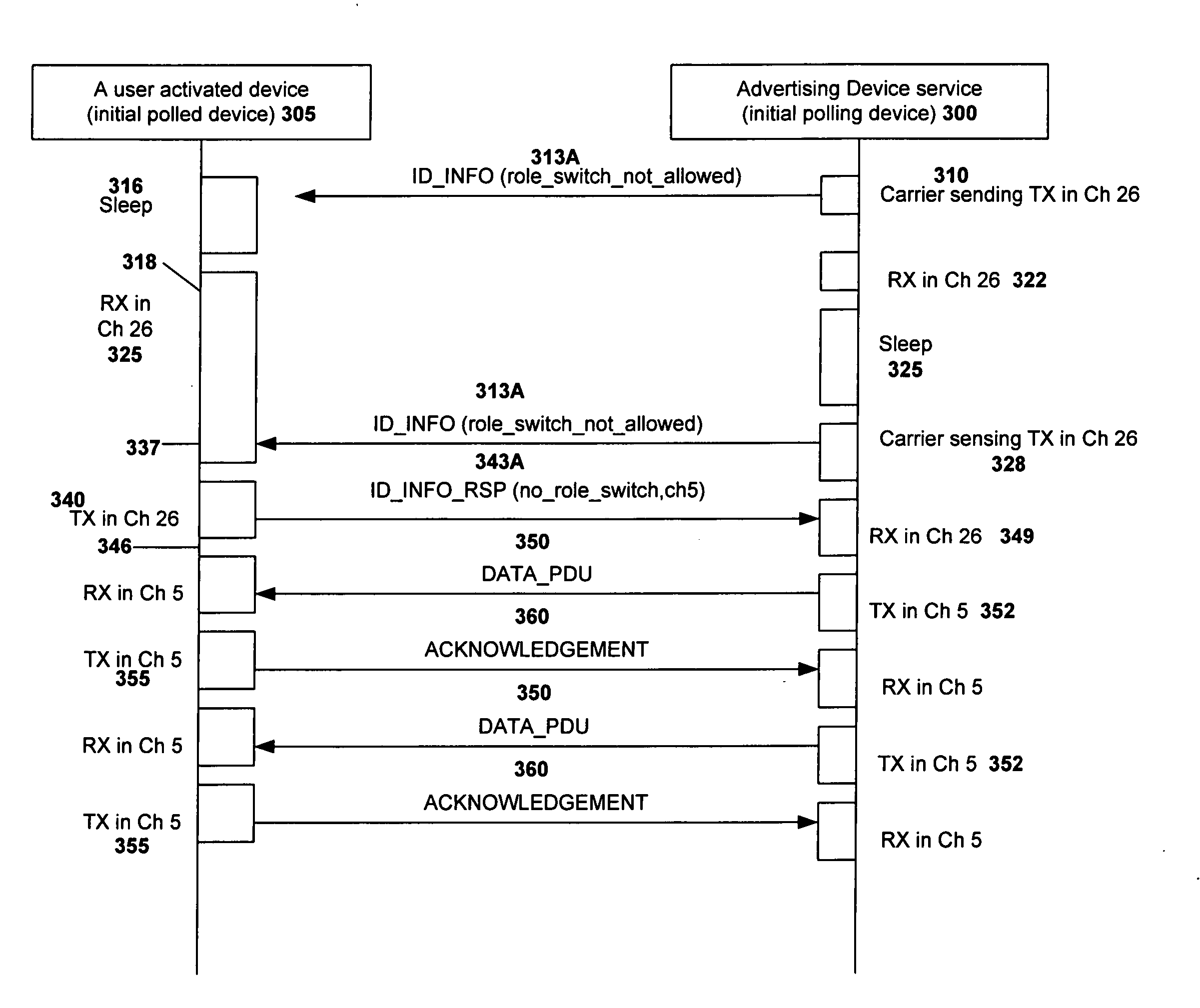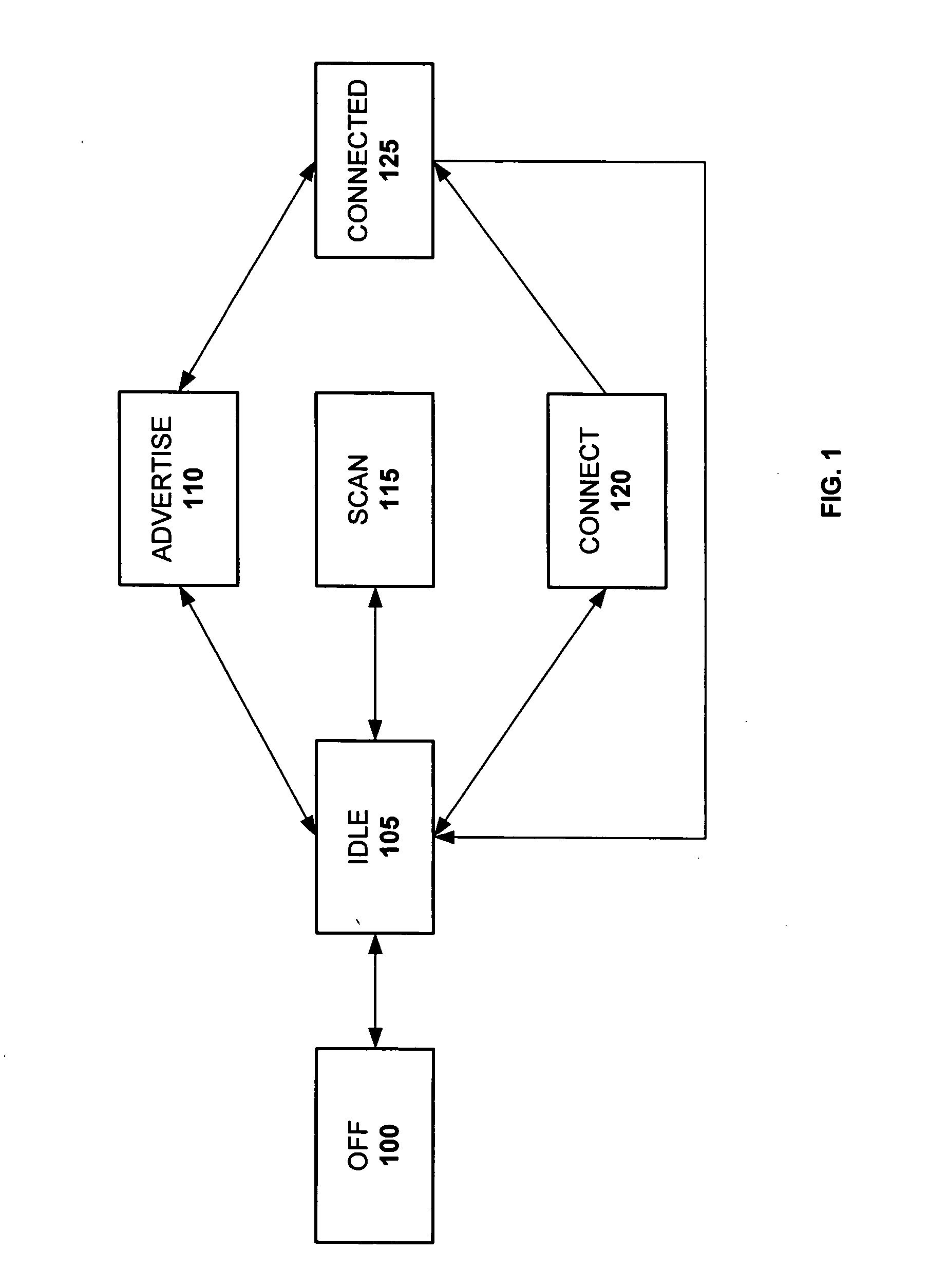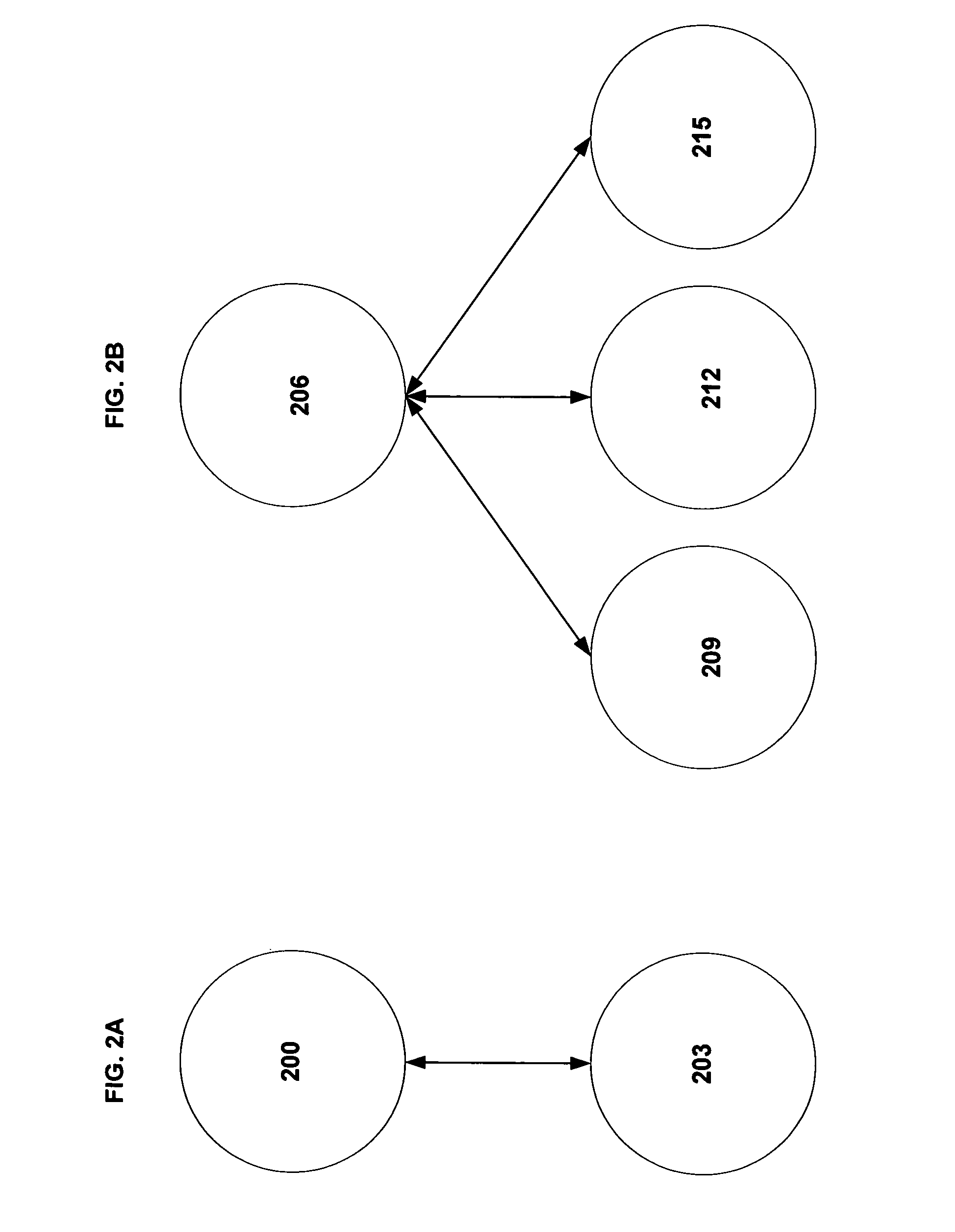Connection mode for low-end radio
a low-end radio and connection mode technology, applied in data switching networks, instruments, high-level techniques, etc., can solve problems such as consuming extra power, and achieve the effects of low power consumption requirements, less sensitive to power consumption requirements, and low power consumption requirements
- Summary
- Abstract
- Description
- Claims
- Application Information
AI Technical Summary
Benefits of technology
Problems solved by technology
Method used
Image
Examples
Embodiment Construction
[0031] In the following description of the various embodiments, reference is made to the accompanying drawings which form a part hereof, and in which is shown by way of illustration various embodiments in which the invention may be practiced. It is to be understood that other embodiments may be utilized and structural and functional modifications may be made without departing from the scope of the present invention.
[0032] Overview
[0033] The optimizations described herein are directed to reducing power consumption, while maintaining communication links between short range wireless devices. Such optimized devices may communicate using a variety of communication protocols. Preferably, one such communication protocol is optimized low-end radio. It is to be understood that the optimizations described herein, may be applied to a wide range communication protocols such as Bluetooth or low-end radio. In an exemplary Bluetooth implementation, the master / slave communication protocols may be...
PUM
 Login to View More
Login to View More Abstract
Description
Claims
Application Information
 Login to View More
Login to View More - R&D
- Intellectual Property
- Life Sciences
- Materials
- Tech Scout
- Unparalleled Data Quality
- Higher Quality Content
- 60% Fewer Hallucinations
Browse by: Latest US Patents, China's latest patents, Technical Efficacy Thesaurus, Application Domain, Technology Topic, Popular Technical Reports.
© 2025 PatSnap. All rights reserved.Legal|Privacy policy|Modern Slavery Act Transparency Statement|Sitemap|About US| Contact US: help@patsnap.com



